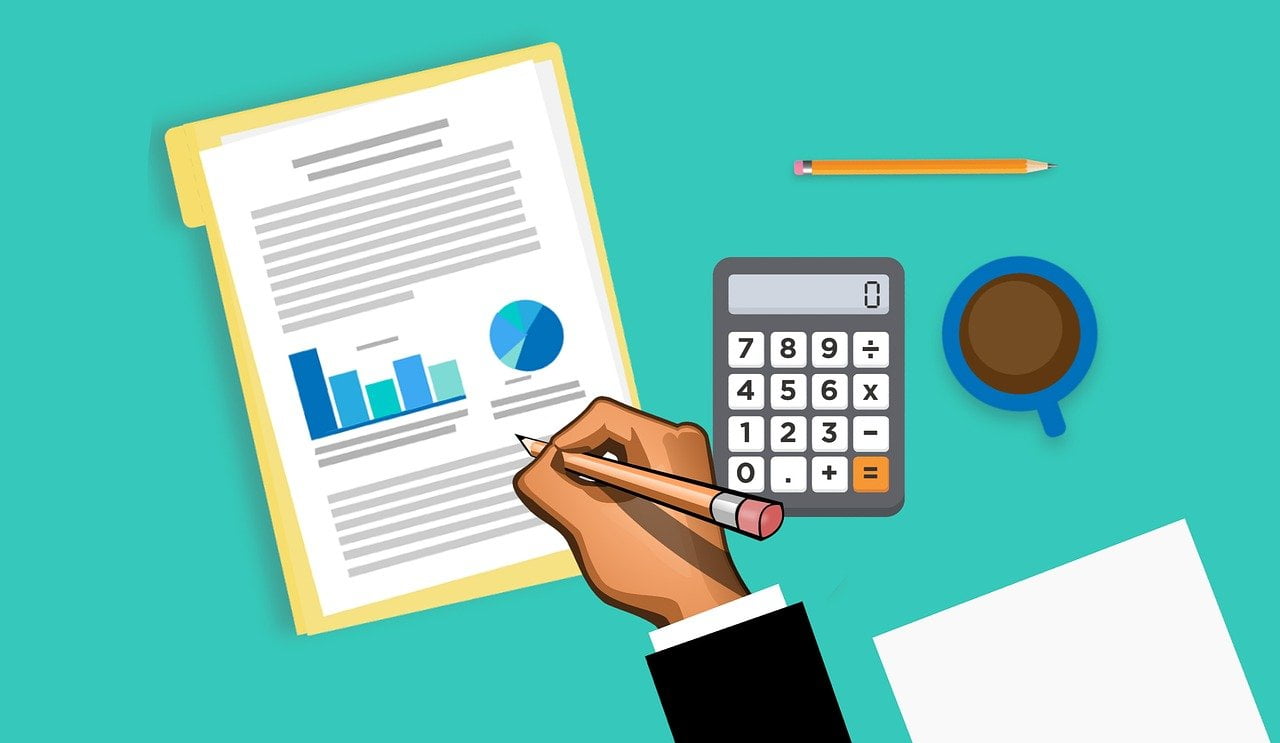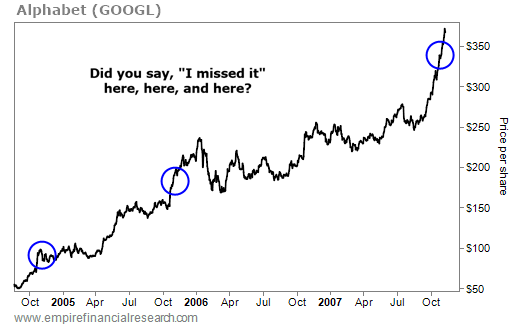Whitney Tilson’s email to investors discussing the three most dangerous words in investing.
The common cliche on Wall Street is that the four most dangerous words in investing are, ‘This time is different’…
But I’ve found a three-word phrase that’s uttered just as frequently… and is arguably even more dangerous.
“I missed it.”
You’ve probably grumbled these words before, especially if you’ve ever passed on a stock you were considering buying… then watched as it marched to new high after new high.
Q2 2022 hedge fund letters, conferences and more
The thing is, a great run higher doesn't necessarily mean it's too late to buy.
The Most Dangerous Words In Investing
Today, I'll show you why this simple, three-word phrase can be so misleading...
In my decades as a value investor, I've seen it time and time again.
Value investors like me tend to look in the bargain bin for beaten-up stocks that are trading at 52-week (if not multiyear) lows. They get a sense of satisfaction from getting a better deal than the guy who bought it a month or a year ago.
It's a great strategy if – and this is a big if – you can correctly identify companies whose fundamentals turn around. The key here is to avoid value traps: the companies that never turn around, and thus their profits (and stocks) keep falling and falling...
But what about stocks that never really fall out of favor and end up in the bargain bin? We value investors often miss them.
Alphabet Stock
Take Alphabet (GOOGL), for example...
In August 2004, the company went public at a split-adjusted $42.50 per share. By October, the price had already more than doubled. A year after that, it had doubled again. And two years after that – in October 2007 – shares were trading at $355. Today, they're up to around $2,500.
Sure, it would be great to have bought shares as soon as it went public. You'd be sitting on gains of more than 4,000% today. But even if you didn't buy on day one, you didn't miss it.
Heck, if you had sucked your thumb for a year, watched the stock go up 300%, and bought shares in October 2005, you still could have doubled your money in only two years...
If you made this mistake, well, join the crowd. I watched Alphabet's shares go from $50... to $100... to $150... to $200... to $250... (You get the point.)
It would be one thing if I had done the work on it and concluded that it was outside my circle of competence (it wasn't) or was too expensive (it wasn't).
But that wasn't the case. I simply didn't do the work. Why? It's not because I was lazy. Rather, every time I looked at the stock, it was usually trading at or near an all-time high, so I kept telling myself, "I missed it" and moved on.
Investing In A Multi-Bagger
If I had just bought what I knew was a great business at any of those points, I'd be sitting on a multi-bagger today...
Let me give you another example. My friend Chris Stavrou, who runs Stavrou Partners – a family office based out of New York – bought shares of Warren Buffett's Berkshire Hathaway (NYSE:BRK.A) back when he was a stockbroker in the 1970s.
He started buying it for his clients around $400 a share – after it had risen more than 2,000% over the previous decade. But Chris didn't fall into the "I missed it" trap.
A decade later, he opened up his own hedge fund. By then, Berkshire was trading at an all-time high of $1,800 per share.
So did he say to himself, "Wow, this stock has moved up a lot – I think I'll wait for a pullback" or "Drat, I missed it"? No. He saw that it was a great company run by a brilliant investor and the stock was still attractive at $1,800. So he bought it for his nascent fund – and still owns those shares today, each valued at more than $500,000!
So learn this lesson well: Whether a stock is trading at a 10-year low or a 10-year high tells you absolutely nothing about whether it's cheap or expensive. Some stocks trading at multiyear lows are horrible value traps that are headed to zero. And some stocks trading at multiyear highs are going to be spectacular winners going forward.
The lesson here is, don't fall into the "I missed it" trap. Ignore where the stock price has been, do the work, and make a rational decision based on your assessment of where the stock is likely to go in the future.
Apple Stock
One stock I didn't miss out on was investing in Apple (NASDAQ:AAPL) when it traded for a split-adjusted $0.35 per share back in October 2000...
In the years that followed, Apple rolled out the iPod music player, iPhone smartphone, iPad tablet, Apple Watch smart device, AirPods headphones, and more.
It's no wonder Apple has been one of the best-performing stocks of all time. It was a rare chance to buy a world-class stock before it rose nearly 47,000%... enough to turn every $2,000 stake into almost $1 million.
Today, I'm seeing another incredible investment opportunity in the markets...
Without giving too much away, I believe we're in the early innings of a powerful bull market that could help you recoup all of your losses over the past year – and then some.
That's why I'm hosting an urgent market briefing on Thursday, September 15. There, I'll pull back the curtains on this hidden bull market with one of my go-to industry contacts... a hedge fund legend who's pounding the table on this opportunity.
As a thank you for tuning in, we're even giving away the name and ticker symbol of one of our favorite ways to play this massive opportunity... no credit card required. Save your seat for this historic event right here.
Regards,
Whitney Tilson







